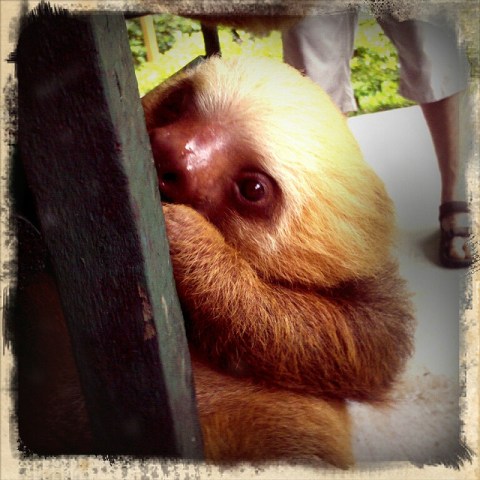Sloths Could Be Carrying Cancer Treatment Around On Their Backs
Slow and steady may win the race

Obviously sloths are adorable, but unfortunately their extreme cuteness alone isn’t enough to stop us from “fern gullying” their habitat. Thankfully, a study done on the medicinal value of sloth fungi may provide huge incentives for us to conserve their rainforest home.
A recent study published in the peer-reviewed Public Library Of Science (PLOS) reminds us how little is understood about the biodiversity of the rainforest. Scientists are just beginning to realize that sloth hair alone contains an intricate ecosystem full of barely-understood symbiotic relationships. A recent analysis of fungi extracted from sloth hair has even revealed a wealth of microorganisms that could lead to breakthrough medical advancements (for humans, but maybe sloths too.)
In the study, researchers from California, Arizona, and Panama collected 74 samples of fungi from the outer-hair layer of sloths in Panama and then tested the samples for their in vitro activity. They discovered that the fungi could be active against Malaria, the tropical parasitic Chagas Disease, and a human breast cancer cell. Twenty of the fungi samples were also active when tested against one bacterial strain.
Since sloths are moving (albeit slowly) throughout the diverse rainforest ecosystem, it’s impossible for the scientists to know exactly how the fungi wound up in the sloth’s fur, although they speculate it may have a symbiotic relationship with the green algae that sloths carry on their backs for a tree-top snack. We speculate that maybe the microbes saw the sloth and were all, hey, can I get a ride? Come on, I’m a fun guy!
Of course, as Kayla Graham says on PLOS blog, “However the fungi ended up in the fur, the authors suggest their presence in the ecosystem provides support for the role biodiversity plays both in the rainforest and potentially our daily lives.”
Hopefully a reminder of the untapped and potentially life-saving resources these mysterious creatures represent will give us more of an incentive to drink that shade-grown coffee and protect their intricate habitat, before we destroy what we don’t fully understand.
After all, I would hate to see what an angry sloth looks like. If they ever caught us, those claws could be sharp.
(via Huffington Post, image via C-Monster)
- Everything you ever wanted to know about sloth poop
- Camel urine a possible cancer cure
- And here’s a compilation of adorable sloth videos
Have a tip we should know? tips@themarysue.com